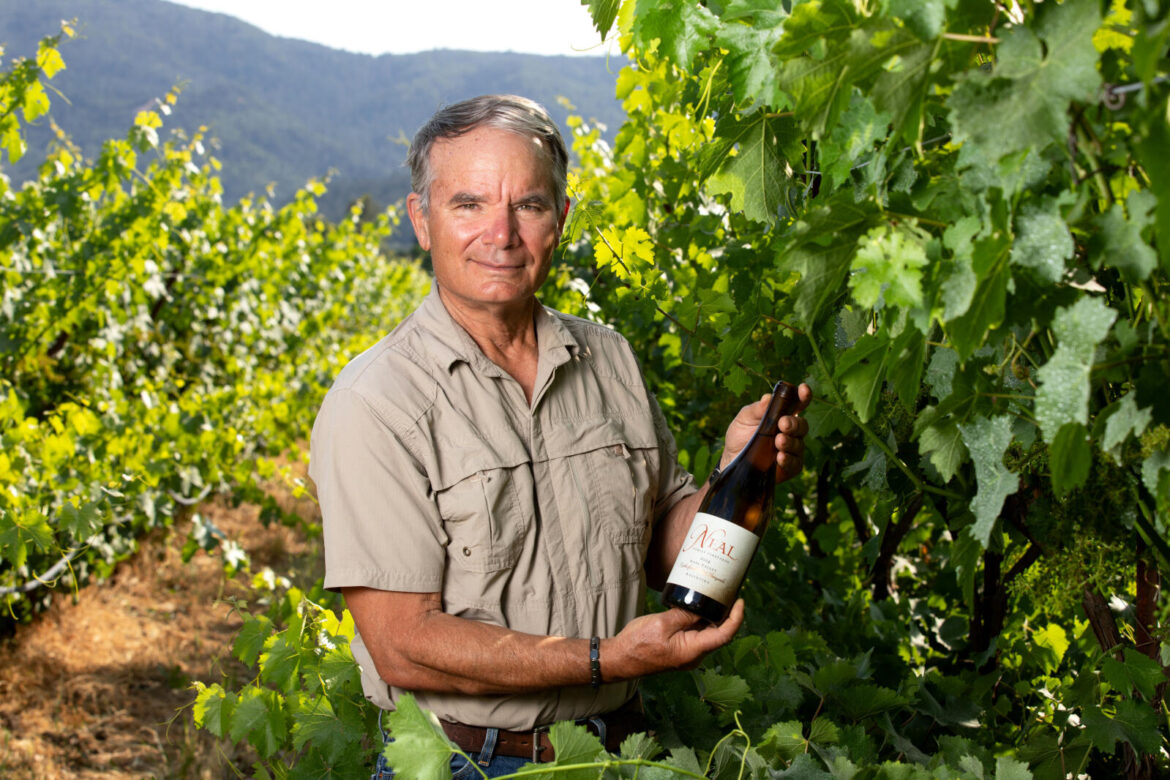For over three millennia, this ancient Greek grape has survived harsh island conditions in the southern Aegean Sea. Now, it’s coming to California.
A boomerang-shaped Greek island in the southern Aegean Sea, Santorini is renowned for its striking natural beauty and whitewashed buildings, which are crowned in domes of indigo blue.
One of about 220 islands that comprise the Greek Cyclades, modern Santorini was formed by a massive volcanic eruption about 3,600 years ago. Left in its wake was a vast caldera and deposits of mineral-rich ash, which transformed the soil into a fertile medium for growing wine grapes.
Chief among them is Assyrtiko (ah-seer-teeko), a white variety resistant to the island’s intense summer heat, lack of water and powerful winds. Vibrant in acidity, with fresh salinity and a distinct flintiness, it’s a grape that begs for shellfish.
No wonder Assyrtiko has been grown on Santorini for over three millennia.
Among the secrets to the grape’s longevity is its immunity to phylloxera, a destructive grape louse that loathes volcanic soil. Another is kouloura: a remarkable trellis system that involves weaving the canes into protective, basket-like structures.
In California, where the rising climate has winegrowers rethinking which grapes to grow and how to grow them, vintners like Mark Neal of Neal Family Vineyards in Napa Valley have started planting Assyrtiko.
A veteran winegrower and winemaker whose grandmother is from the Greek island of Crete, Neal planted 2.5 acres of Assyrtiko five years ago. This year, he released the first bottling, which is one of a handful produced in the country.
“Assyrtiko is similar to other white Mediterranean varieties, like Fiano, Vermentino and Albariño, which grow really well in the North Coast,” said Neal, whose vineyard management company farms 1,200 organic acres in Napa Valley. “I played around with the grape for a while to get it where I wanted it to be. But now, I think the wine is excellent.”
Like the Greeks of Santorini, Neal has implemented a unique trellising method to combat rising temperatures. On the dual trellis system, a heat-tolerant red variety on the top tier shades a white variety on the bottom. The result is a microclimate that protects the white variety from sunscald and heat.
Planted above Neal’s Assyrtiko and other white varieties are numerous Greek red varieties, as well as Cabernet Sauvignon, Petite Sirah and Zinfandel.
“When I was a kid in Napa Valley, we used to grow all these crazy varieties. Then we all went down the oaky Chardonnay path,” he said. “But that train was driven hard. Now, it’s exciting to see the younger generation planting new varieties. They want new things to discover.”
From Crete to Lodi
In the appellations of Lodi and Clements Hills, brothers Jeff and John Perlegos are best known for their Stampede Vineyard old vine Zinfandel grapes.
But in 2018, they decided to take a gamble on Assyrtiko, a grape that honors their Greek heritage. First-generation Greek Americans, the brothers discovered the ancient grape during a trip to Santorini.
“We completely fell in love with it,” said Jeff Perlegos, co-owner of Perlegos Family Wines. “One day, we thought, wouldn’t it be awesome to try growing it in Lodi? We just wanted to see what it could do.”
Recognized for its hot, arid summers and sandy loam soils, Lodi felt like a natural place to grow Assyrtiko. Like Santorini, many of the region’s old vines are resistant to phylloxera — a boon of the silica-rich soil.
While many modern vines are grafted onto phylloxera-resistant rootstocks, much of Lodi’s old vines remain own-rooted. The Perlegos decided to trial both.
Seven years ago, they planted a half-acre test plot of own-rooted Assyrtiko right outside Lodi. An additional 1.5 acres were added by grafting over an existing vineyard block in Clement Hills. Adjacent to the family’s Stampede Vineyard, the Assyrtiko block is called Thera — Santorini’s original name.
“There is no way you can replicate the terroir of Santorini anywhere in the world, but from a weather perspective, Lodi is pretty similar,” said Perlegos. “We knew someone was going to grow Assyrtiko in California at some point — why shouldn’t it be us?”
Longtime grape growers, the Perlogos expanded into winemaking in 2020. Two years later, they produced their first Assyrtiko wine, and now they make both a still and sparkling version. They also sell a portion of the grapes to winemaker Tegan Passalacqua for his Sandlands label.
“We’re not just in the business of growing grapes and making wine. We want to do something important that contributes to the Lodi wine region,” Perlegos said. “We thought Assyrtiko would do great and we’re happy with the results so far.”

